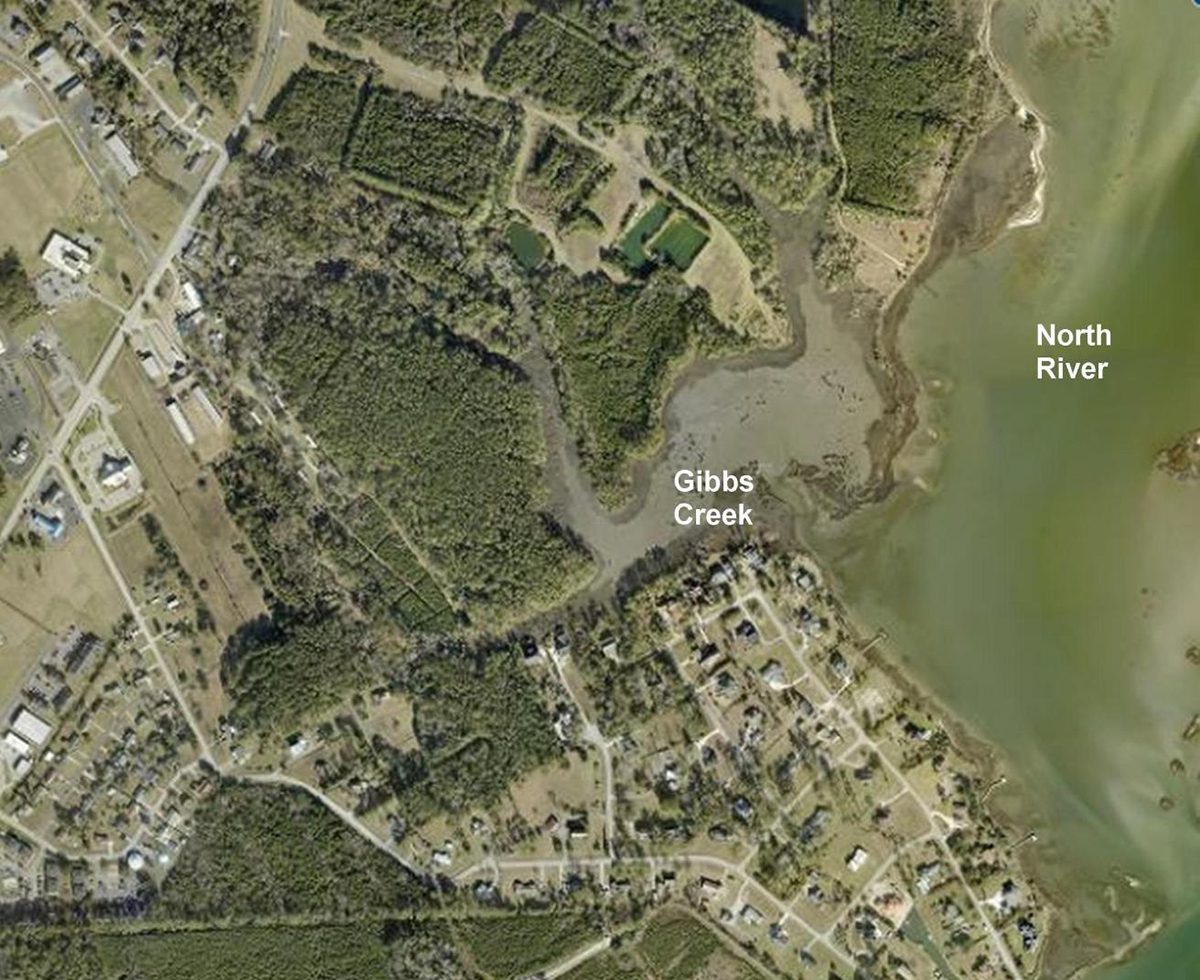
Guest commentary
Last month the Beaufort Citizens Alliance applied to the North Carolina Division of Coastal Management to nominate an “Area of Environmental Concern” (AEC) for a portion of a tributary tidal creek on North River, Gibbs Creek.
Gibbs Creek is the last remaining, mostly undeveloped tidal Creek watershed in the extraterritorial jurisdiction of the town of Beaufort, classified as SA High Quality Waters (HQW) by the N.C. Department of Environmental Quality and open to shellfish harvest.
Supporter Spotlight

The AEC nomination process is specified in state statute 15A NCAC 07H .0503, which explicitly permits citizens of North Carolina to nominate an AEC. While this nomination process is not a generally known fact and isn’t advertised by our state environmental agencies, according to the Coastal Area Management Act handbook:
“Areas of Environmental Concern (AECs) are the foundation of the Coastal Resources Commission’s permitting program for coastal development. An AEC is an area of natural importance: it may be easily destroyed by erosion or flooding; or it may have environmental, social, economic or aesthetic values that make it valuable to our state. The Coastal Resources Commission designates areas as AECs to protect them from uncontrolled development, which may cause irreversible damage to property, public health or the environment, thereby diminishing their value to the entire state.”
Of the four categories that CAMA has set up for AECs, our nomination meets the criteria of: 1) The Estuarine and Ocean System and 2) Natural and Cultural Resource areas. The application explains the ecological, social, and cultural reasons why the Gibbs Creek watershed should be protected as much as possible to preserve its status as a Coastal Complex Natural Area AEC (15a NCAC 07H .506) and a Natural and Cultural Resource Area AEC (15A NCAC 07H Section .5000).
The nomination is based on scientific research and firsthand experience documenting the consequences of development in sensitive coastal environments like tidal creeks. There is compelling evidence supporting the need to protect and preserve the biological and physical integrity of tidal creek watersheds with undisturbed buffers that ensure their function as key components of the watershed landscape, the estuarine ecosystem they are an integral part of, the public trust resources that depend on them, and the social, cultural and economic benefits they provide to our communities.
As is the case with all the AECs now in place, our nomination does not prevent the landowner from selling their land, nor does it restrict a purchaser from developing the land in an environmentally responsible manner.
Supporter Spotlight
The statute authorizing the nomination process requires Division of Coastal Management staff to conduct a public information meeting to discuss the proposed nomination. At that meeting on May 8, division staff provided the context and background information on the AEC nomination process. The division also provided us with an opportunity to describe our nomination, followed by presentations and comments from some of the invited stakeholders: the three landowners, the town of Beaufort, and a representative of the Coastal Resources Commission.
I doubt that anyone who attended the meeting came away not thinking that this nomination wasn’t controversial. It has been almost 30 years since anyone nominated an AEC, so for many, including DCM, this process is part of the learning curve striving to achieve responsible coastal development.
Since the Gibbs Creek watershed was first proposed for a large-scale planned unit development in July 2020, citizens and other organizations in Beaufort and elsewhere in Carteret County have advocated for responsible coastal development. We’ve conducted public information meetings, engaged with town officials in writing, and orally at municipal meetings. We’ve also met personally with local and regional conservation organizations, as well as the developer, to discuss reasonable measures that would protect the watershed and the creek and not prevent the current landowners from selling their property.
These efforts lead to the withdrawal of the proposed 400-plus-unit project and a subsequent application for approval of the first phase of an 80-unit single family subdivision in the watershed. For the past year, we have closely monitored the CAMA major and stormwater permit applications for the proposed subdivision and, where possible, submitted informed comments to federal and state agencies for their consideration.
As part of this process, we are using all the available opportunities and tools the public has, including the AEC nomination, to engage in promoting responsible development in sensitive coastal environments.
The accusation that we are a “not in my back yard,” anti-development group of concerned citizens is a misrepresentation of the facts. Areas of Environmental Concern are applied to protect ecologically and economically valuable coastal resources across the 20 coastal counties. This is more than just my “backyard”; these sensitive habitats cover hundreds of thousands of acres that millions of North Carolina residents rely on for their social and economic well-being. Local and piecemeal degradation of these vital resources is leading to regional and statewide cumulative impacts with implications beyond my backyard. Informed and wider application of AECs could be used to offset these impacts.
Our state environmental agencies tasked with permitting and monitoring coastal development are underfunded and understaffed — a circumstance that was clearly written into Chapter Six of the North Carolina Coastal Habitat Protection Plan Amendment in 2021 and recently articulated to the Coastal Resources Commission. This leaves a void that a concerned and informed public can partially fill by closely monitoring the environmental permitting and compliance processes and exploring all of the possible tools we have to work with.
That is exactly what we have been doing, and more of us could be doing, to ensure that our valuable and sensitive public trust resources are managed responsibly.
To stimulate discussion and debate, Coastal Review welcomes differing viewpoints on topical coastal issues. See our guidelines for submitting guest columns. Opinions expressed by the authors are not necessarily those of Coastal Review or our publisher, the North Carolina Coastal Federation.








